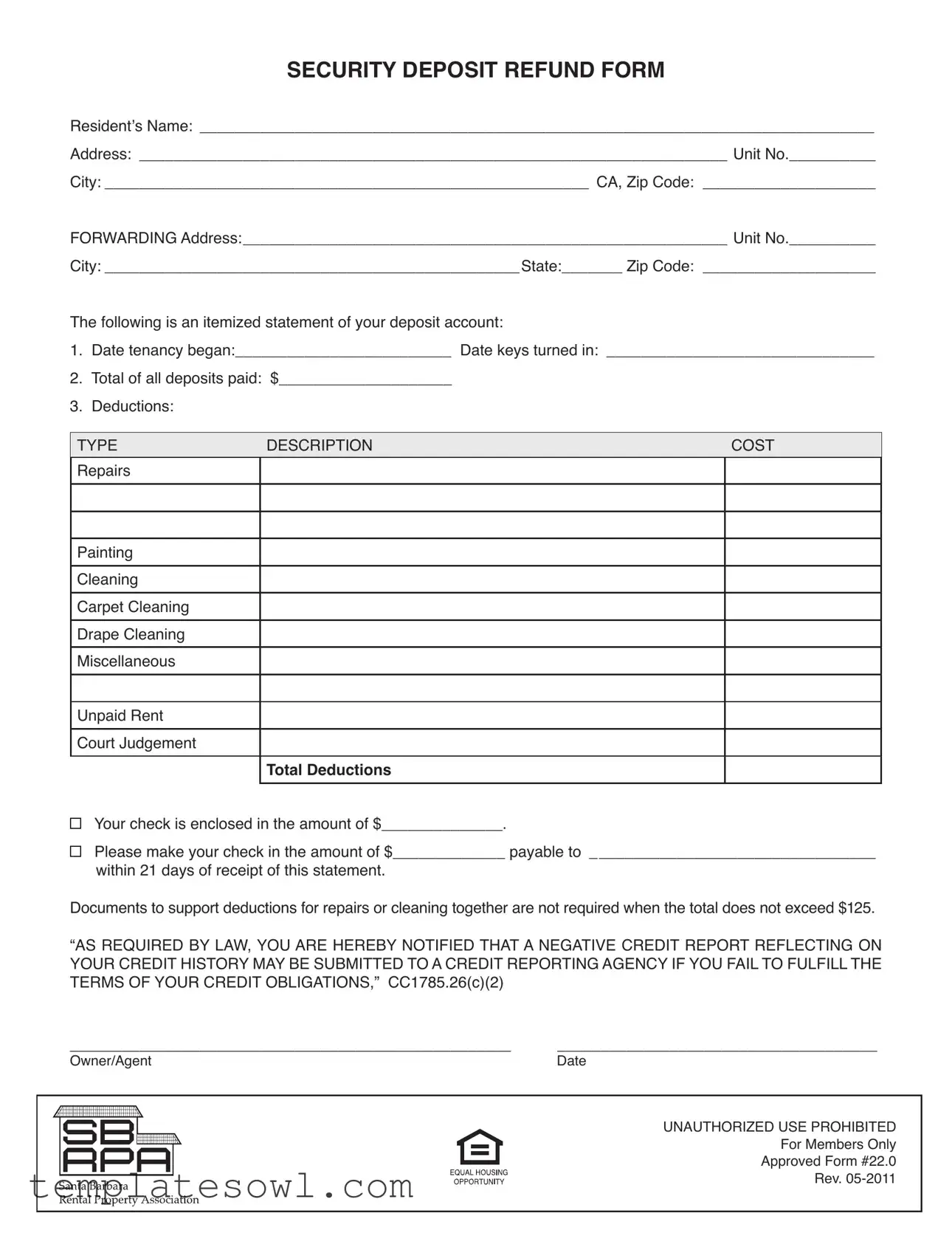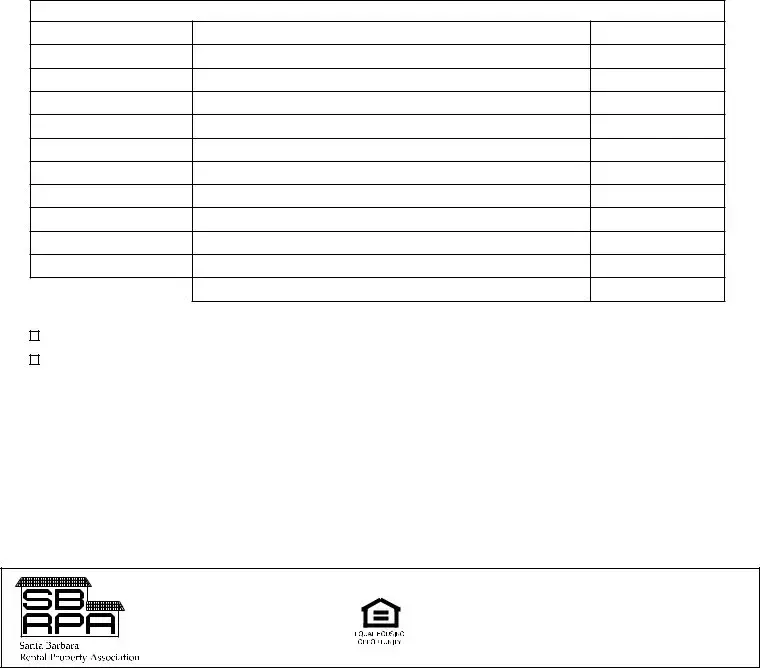What is a Security Deposit Deductions form?
The Security Deposit Deductions form is a document provided by landlords or property managers to itemize any deductions made from a tenant's security deposit. This form outlines the costs associated with repairs, cleaning, and any other charges deducted from the original deposit upon the tenant's departure.
Why do landlords use this form?
Landlords use the Security Deposit Deductions form to provide transparency to tenants about how their security deposit is being utilized. By detailing each deduction, landlords ensure that tenants can clearly see and understand the reasons for the charges against their deposit.
What information do I need to provide on the form?
Tenants need to provide specific information, including their name, address, unit number, and forwarding address. Additionally, the form requires details about the tenancy, such as the start date and date when keys were returned, alongside an itemized statement of any deductions made from the deposit.
What types of deductions might I see on the form?
Common deductions include costs for repairs (like fixing damages), cleaning (for the apartment or carpets), miscellaneous charges, unpaid rent, or court judgments. Each type of deduction should be clearly listed with a corresponding cost.
How soon will I receive my security deposit refund?
According to California law, landlords are required to return the security deposit or provide an itemized statement of deductions within 21 days after the tenant vacates the premises. If you receive a check, make sure that the amount corresponds to what is indicated in the deductions section.
What if the deductions do not exceed $125?
If the total deductions for repairs or cleaning are less than or equal to $125, landlords are not required by law to provide supporting documents for those amounts. This means you may receive the deposit refund without additional paperwork in such cases.
Can I contest the deductions on the form?
Yes, tenants can contest any deductions they believe are unjust or incorrect. It is usually advisable to communicate with the landlord or property manager directly to discuss the discrepancies and seek resolution. Keeping records of the apartment's condition during move-out can be helpful.
What happens if I do not fulfill my credit obligations?
The form includes a notice about the potential for a negative credit report. If a tenant fails to fulfill their financial obligations, such as unpaid rent or other debts, landlords may report this to credit agencies, which can affect the tenant's credit history.
What should I do if I don’t receive my deposit refund?
If you have not received your deposit refund or an itemized statement after 21 days, it's important to reach out to your landlord or property manager. Document your attempts to communicate in case you need to take further action, such as contacting a local housing authority.
Is there an official template for the Security Deposit Deductions form?
Yes, the Security Deposit Deductions form is often based on approved templates. The one provided here, approved for use by members, is designed to meet legal requirements and ensure proper documentation is maintained during the refund process.

